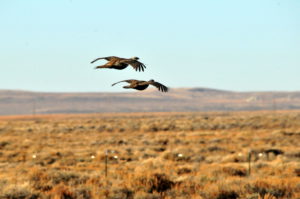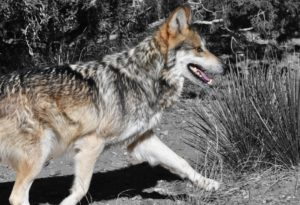 Desert tortoises are large, herbivorous, land dwelling turtles found in suitable habitat throughout North America’s Mojave and Sonoran Deserts. West to east they range from the east side of California’s coastal range 300 miles across southern Nevada through to Utah’s southwest corner. North to south they extend 900 miles, from Utah through Arizona and across the border through Sonora and into northern Sinaloa, Mexico.
Desert tortoises are large, herbivorous, land dwelling turtles found in suitable habitat throughout North America’s Mojave and Sonoran Deserts. West to east they range from the east side of California’s coastal range 300 miles across southern Nevada through to Utah’s southwest corner. North to south they extend 900 miles, from Utah through Arizona and across the border through Sonora and into northern Sinaloa, Mexico.
Desert tortoises form a fascinating complex of populations with very different genetic and behavioral profiles that reflect the very different ecologies of the desert regions that they are found in. Unfortunately, many of these populations are in serious trouble. They are threatened by habitat loss, disease, livestock grazing, climate change and extended drought, urban sprawl, off-road vehicles, predation, inadequate legal protection, and additional factors. They face new, emerging threats such as the human response to climate change. Their Mojave Desert home is viewed as prime real estate for building massive Solar Power plants.
Desert tortoise populations found west and north of the Colorado River were listed under the Endangered Species Act in 1989, and designated as threatened in 1990. Critical habitat was designated in 1994 and a Recovery Plan issued the same year. The science-based recovery plan has been attacked as too restrictive by extractive users despite not having been fully implemented. The USFWS is currently rewriting the plan and has issued a draft that weakens agency management and fails to incorporate best available science.

Desert tortoise populations east and south of the Colorado River were excluded from the 1990 listing on the grounds that they were less imperiled than their cousins to the west. This includes Mojave-type desert tortoises in the Black Hills north of Kingman, Arizona and the Sonoran desert tortoise populations that are scattered throughout southwest Arizona and Sonora, Mexico. Although to the untrained eye they may look similar, Sonoran desert tortoises show marked genetic and behavioral differences from tortoises found in the Mojave Desert and are widely believed to represent a separate species. These tortoises are faced with myriad threats and have undergone severe population declines in some areas. A recently completed report estimated that desert tortoise populations are declining by about 3.5% per year on monitoring sites throughout southwestern Arizona. These declines and a growing list of threats prompted Western Watersheds Project and WildEarth Guardians to petition the Department of Interior to list the Sonoran desert tortoise population under the Endangered Species Act and designate critical habitat to protect the animal in 2008. A copy of that petition is avilable here.
WWP is engaged in tortoise-related litigation over cattle grazing on the Sonoran Desert National Monument. The 496,337 acre Monument includes 25,000 acres of land in the Maricopa Mountains that was designated as critical habitat for the Sonoran desert tortoise under the presidential proclamation. The litigation seeks to ensure that the Bureau of Land Management determine determines the compatibility of cattle grazing with protecting the Monuments resources.






